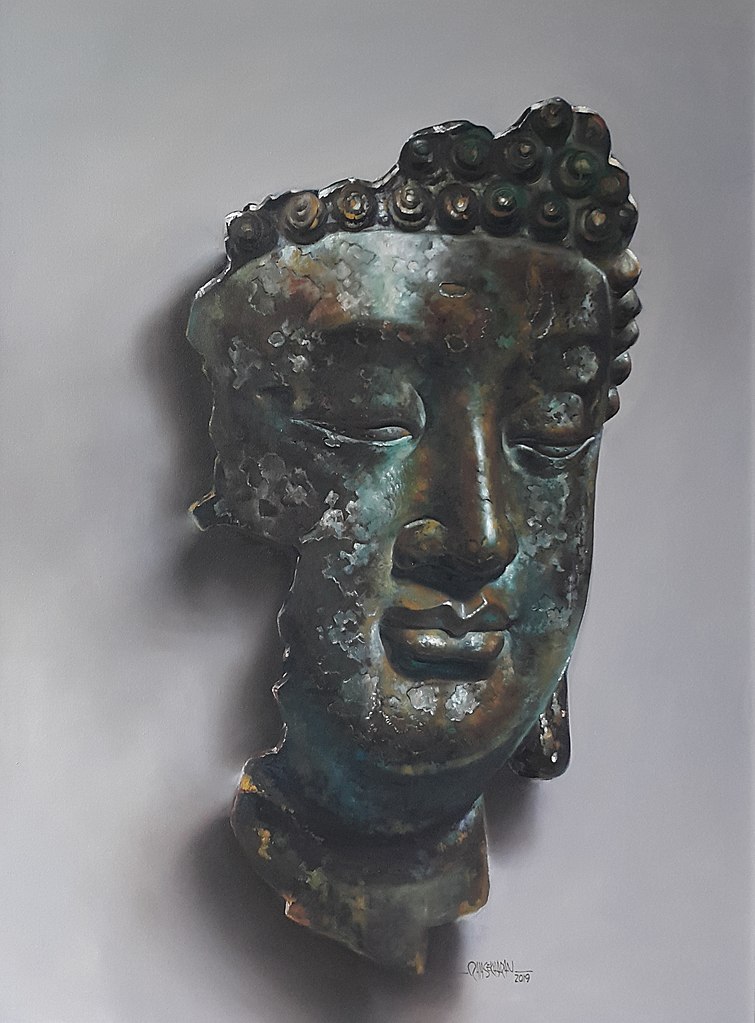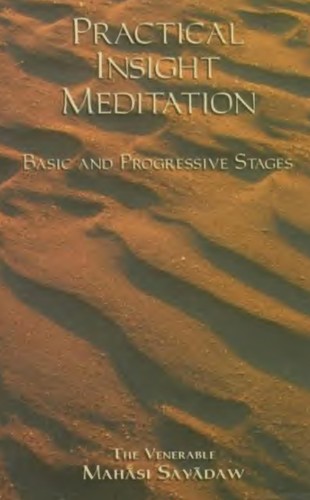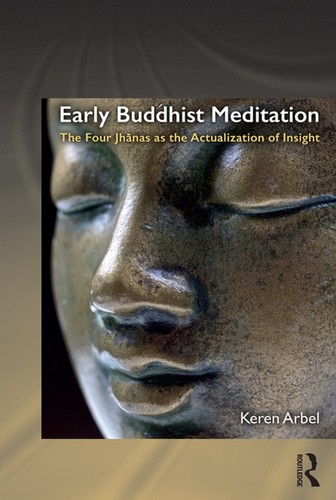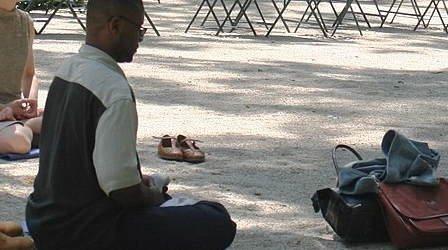Vipassanā
Subscribe to this topic via: RSS
Insight meditation

"Ecstasy Buddha" by Rajasekharan Parameswaran (CC BY-SA 4.0) is an oil painting depicting a brass Buddha face, caught mid-disappearance. Insight meditation is the practice of seeing the impermanent and illusory nature of all forms: especially our own body and mind.
Table of Contents
- Books (16)
- Canonical Works (65)
- Readings (26)
- Audio/Video (19)
- Reference Shelf (2)
- Related Topics (1)
Books (16)
Featured:
-
⭐ Recommended
-
You can see that every moment is birth and death. There is nothing you can keep, and there is nothing you can hold on to, because things are arising and passing away so quickly.
-
… it is necessary to work for the total removal within oneself of sakkāya-diṭṭhi, which is the root cause of rebirth in the miserable states of existence. Sakkāya-diṭṭhi can only be destroyed completely by the noble path and fruit: the three supramundane virtues of morality, concentration, and wisdom. It is therefore imperative to work for the development of these virtues. How should one do the work? By means of noting
-
A short collection of essays addressing questions and problems that came up for readers of the first volume.
-
⭐ Recommended224 pages[recommended but under copyright]
See also:
Canonical Works (65)
Featured:
-
If he thus goes into seclusion and lives alone, his thoughts aren’t careless. He cultivates diligence, stops mental disturbances, and attains a concentrated state…
-
⭐ Recommended
Mendicants, these seven perceptions, when developed and cultivated, are very fruitful and beneficial. They culminate in the deathless and end with the deathless. What seven? The perceptions of ugliness, death, repulsiveness of food, dissatisfaction with the whole world, impermanence, suffering in impermanence, and not-self in suffering.
-
⭐ Recommended
They contemplate the phenomena there—included in form, feeling, perception, choices, and consciousness—as impermanent, as suffering, as diseased, as a boil, as a dart, as misery, as an affliction, as alien, as falling apart, as empty, as not-self. They turn their mind away from those things, and apply it to the deathless
-
For it is death in the training of the noble one to reject the training and return to a lesser life.
-
The Buddha teaches Ānanda the development of the faculties for disciples at the entrance, middle and end of the path.
-
The beauties remain as they are in the world,
while, in this regard,
the enlightened
subdue their desire. -
… even for King Pasenadi there is alteration; there is change
-
I became profoundly dispassionate
towards all sensual pleasures.
Seeing fear in identity,
I longed for renunciation. -
… he understands: ‘I feel a feeling terminating with life.’ He understands: ‘With the breakup of the body, following the exhaustion of life, all that is felt, not being delighted in, will become cool right here; mere bodily remains will be left.’
-
Let them enjoy the filthy, lazy pleasure of possessions, honor, and popularity.
-
A bhikkhu who in such a manner is ardent and afraid of wrongdoing is called constantly energetic and resolute.
-
… when the perception of impermanence is developed and cultivated it eliminates all desire for sensual pleasures, for rebirth in the realm of luminous form, and for rebirth in a future life. It eliminates all ignorance and eradicates the conceit ‘I am’
-
All dhammas are unworthy of attachment.
-
I rejoice, great seer,
in that supreme peace -
⭐ Recommended
Suppose, bhikkhus, there was a great tree. Then a man would come along bringing a shovel and a basket. He would cut down the tree at its foot, dig it up, and pull out the roots…
-
I went in search of the world’s gratification, and I found it.
-
… by thoroughly understanding conceit, he has made an end of suffering.
-
What is the gratification, what is the danger, what is the escape in the case of feeling … perception … volitional formations … consciousness?
-
How is Māra defined?
-
What is the cause, sir, what is the reason why some sentient beings aren’t fully extinguished in the present life?
-
Therefore, bhikkhus, an exertion should be made to understand…
See also:
Readings (26)
Featured:
-
A translation of several sections of the Treatise on the Heart of the Abhidharma (阿毘曇心論 / Abhidharmahṛdayaśāstra) (T1550) by Zunzhe Fa-sheng (尊者法勝 / Ārya Dharmajina?) examining how the four satipaṭṭhāna are to be practiced sequentially to lead to insight.
-
While the Buddha analyzed and explained the sequence of mind moments in minute detail, to me it’s more like falling out of a tree. As we come crashing down there’s no opportunity to estimate how many feet and inches we’ve fallen. What we know is that we’ve hit the ground with a thud and it hurts!
-
… a brief survey of three modern day insight meditation traditions (I), followed by examining their common roots in the medieval scheme of insight knowledges (II), which in turn I trace back to the early discourses in the Pāli Nikāyas (III).
-
Meditation Is a Powerful Mental Tool—and For Some People It Goes Terribly Wrong (2018) – Shayla Love
David had a hunch about what had caused his panic attack: his meditation practice.
-
When practicing Vipassana in line with the Four Foundations of Mindfulness, there are some important basics
-
A brief summary of the most important sutta on vipassanā meditation.
-
… no ordinary being can truly take the measure of another…
See also:
Audio/Video (19)
Featured:
-
⭐ Recommended
How do you see things as they are?
-
🥇 Best of

-
We need to catch “that which is aware” as a process. That which is aware during meditation is not a stable entity. It’s just a process. If we see it as a stable entity, we’re going the wrong way.
-
The last sutta in the Majjhima Nikaya stumps Bhikkhu Bodhi.
-
If we have agility, we can accommodate both these aspects
See also:


